- HOME >
- 施設概要(Facility outline)
施設概要(Facility outline)
Yumeji Art Museum (Main)

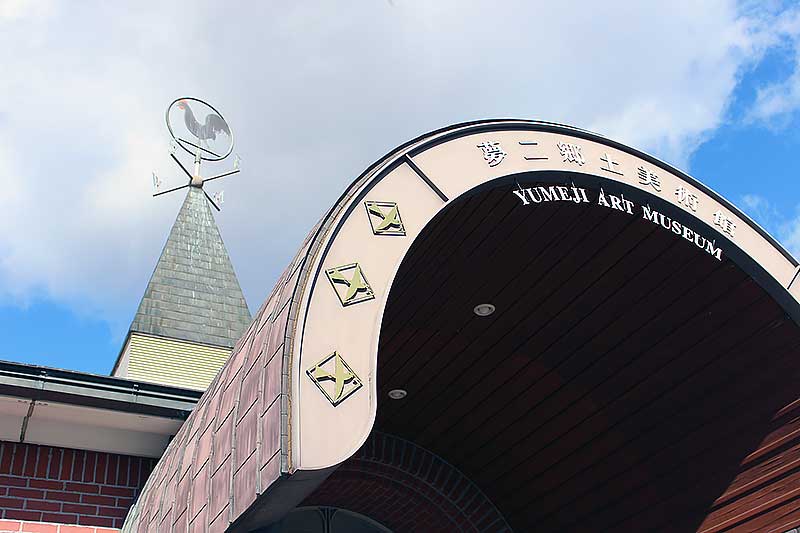
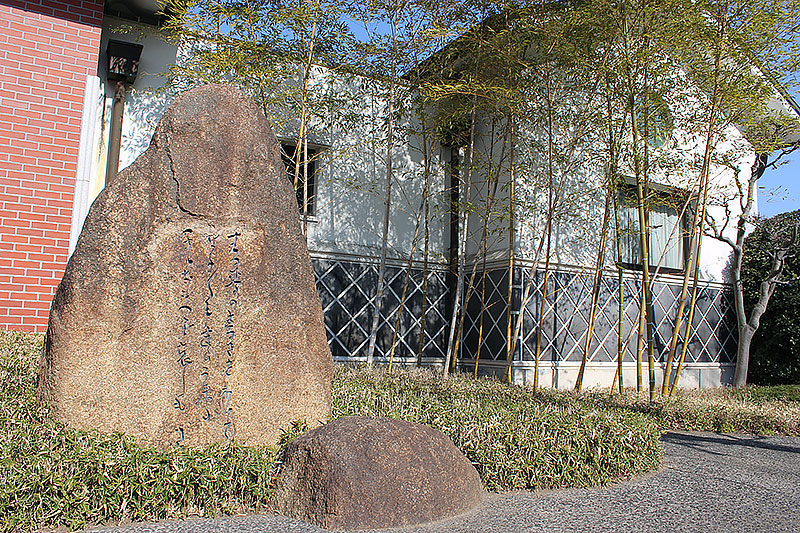
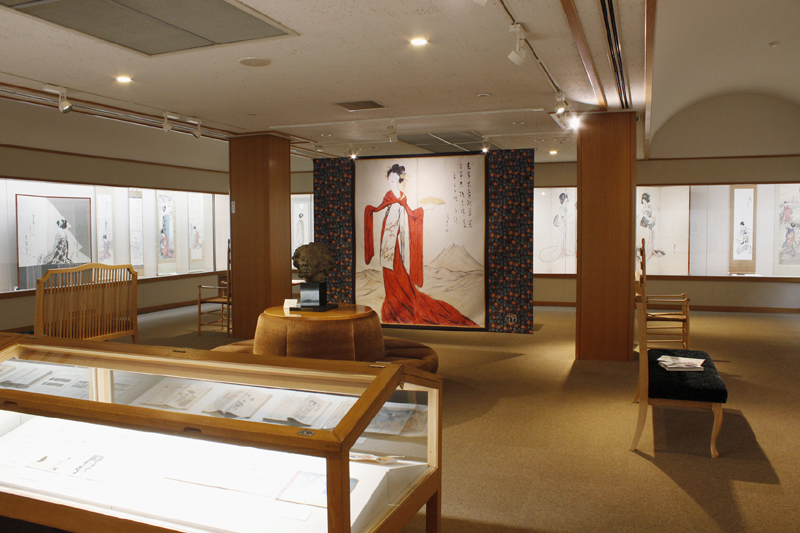
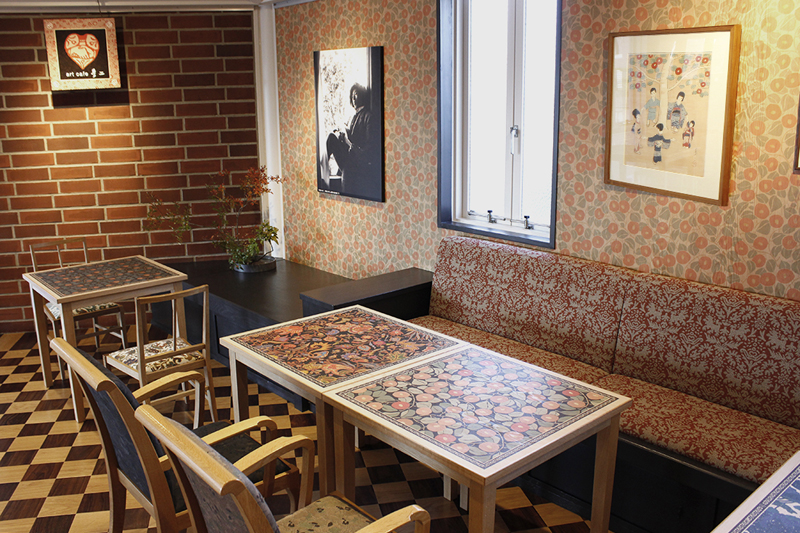
This is the very first museum specialised in the collection of Yumeji Takehisa’s art. We are particularly proud of the magnificence of the paintings of our collection. This beautiful building was designed by Shizutaro Urabe who perfectly managed to capture the atmosphere of Yumeji’s era, the Taisho period. Furthermore, on the occasion of its 50th anniversary, the museum has been renovated under the supervision of the designer, Eiji Mitooka. Many exhibition rooms as well as the have been thoughtfully designed to further improve your experience of Yumeji’s outlook on the world. We also hold four special exhibitions throughout the year during which over a hundred pieces are chosen according to the theme. You will also have unique encounters with pieces that you can only see here, such as folding screens and hanging rolls.
Opening times
9:00 – 17:00 (Last admission at 16:30)
Closed day
Monday (However, when a National Holiday falls on a Monday, the museum is open on that Monday and is closed on tha following Tuesday), New Year
Admission fee
Adult 800 yen, middle and high school students 400 yen, elementary school students 300 yen
Parking lot
10 cars and 2 large buses
Estimated viewing time
approximately 30 to 60 minutes
<art café Yumeji> (Cafe & Gift shop)
During the 2017 renovation, Okayama-born Eiji Mitooka and Yumeji collaborated through time and space to create the 6th exhibition room named the . The entire room is decorated with Yumeji’s designs and woodblock prints and the furniture was designed by Mitooka. Delicious food is also on offer such as Yumeji’s favourite raisin sandwich cookie as well as some flavourful dish made with local food.
(No admission fee required)
→Click here for details
・ Gift shop opening hours: 9:00 – 17:00
・ Cafe opening hours: 9:00 – 16:00
(No admission fee required)
→Click here for details
・ Gift shop opening hours: 9:00 – 17:00
・ Cafe opening hours: 9:00 – 16:00
Yumeji Art Museum Yumeji Birthplace Memorial Museum・Shonensanso

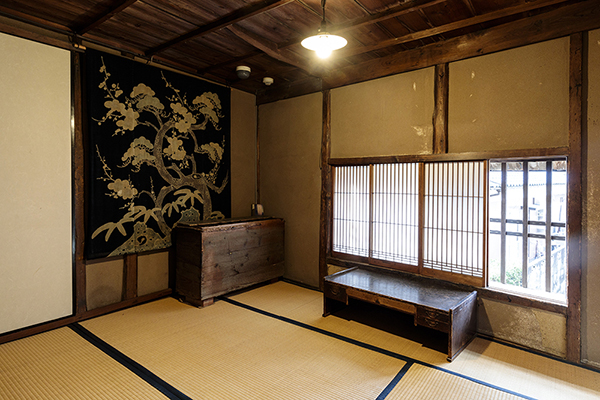
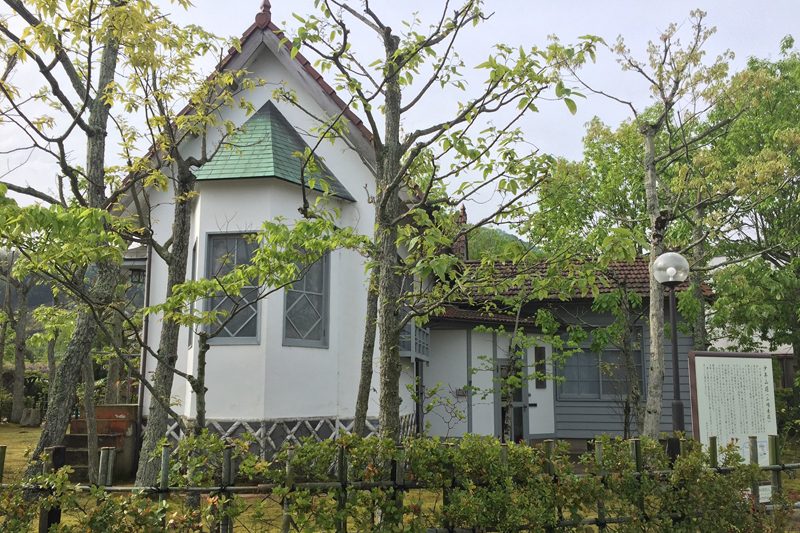
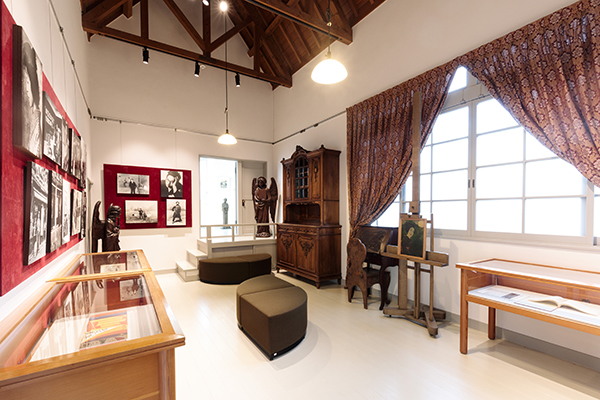
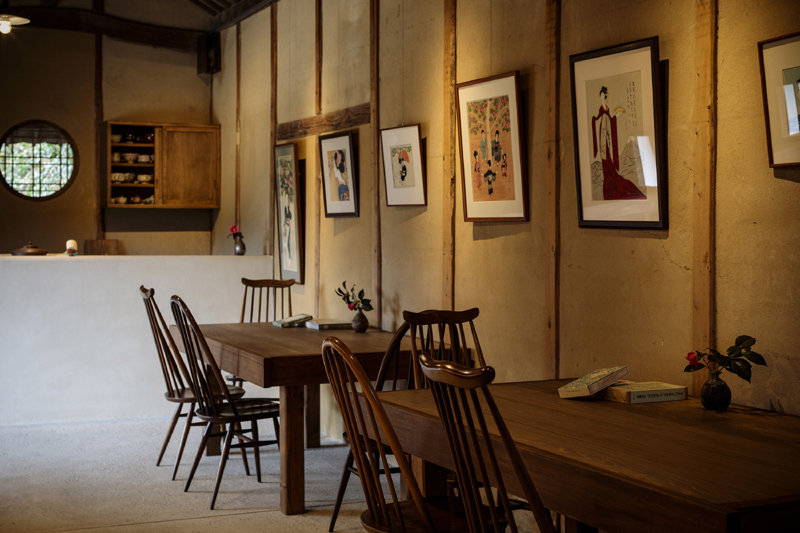
‘Yumeji was born here’. Ikuma Arishima’s words on the stele placed next to the gate welcomes you to Yumeji’s Childhood home, “Yumeji Birthplace Memorial Museum”, a 250 years old thatched house where some of his artworks are now on display. He lived here with his family until he left to go study at Kobe middle school at the age of 16. His childhood room, where he wrote in the window frame the name of his beloved sister who left the family home to get married, the backrooms and the storehouse have been transformed into exhibition rooms. The artwork exhibited changes according to the seasons and revolves around the themes of ‘childhood’ and ‘hometown’. There is no doubt that admiring these beautiful paintings as you travel back to a happy childhood during which Yumeji nurtured his art will leave a lasting and deep impression on you.
The barn next to the main building has been transformed into an exhibition room, cafe and the gift shop ‘Tsubaki Sabo’. You can find some original Yumeji goods and enjoy some matcha tea accompanied by a delicious seasonal and Yumeji-themed wagashi (japanese sweet) made by a Kyoto wagashi artist named Sayoko Sugiyama.
“Shonensanso” was Yumeji’s live-in atelier that he designed and built in Tokyo in the last years of his life. It is often referred to as his only architectural work. This Japanese and Western style building, where many of Yumeji’s artwork were created, was faithfully rebuilt in 1979 under the careful supervision of his second son, Fujihiko. On 2019, 135th anniversary of Yumeji’s birth, the building was renovated and now follows the theme of Yumeji’s life, design and music. In total, seven rooms are now open to the public. In addition to Eiji Mitooka’s designed ‘the black cat Kuronosuke’s room’, there are also a number of special exhibitions and workshops that take place throughout the year.
The barn next to the main building has been transformed into an exhibition room, cafe and the gift shop ‘Tsubaki Sabo’. You can find some original Yumeji goods and enjoy some matcha tea accompanied by a delicious seasonal and Yumeji-themed wagashi (japanese sweet) made by a Kyoto wagashi artist named Sayoko Sugiyama.
“Shonensanso” was Yumeji’s live-in atelier that he designed and built in Tokyo in the last years of his life. It is often referred to as his only architectural work. This Japanese and Western style building, where many of Yumeji’s artwork were created, was faithfully rebuilt in 1979 under the careful supervision of his second son, Fujihiko. On 2019, 135th anniversary of Yumeji’s birth, the building was renovated and now follows the theme of Yumeji’s life, design and music. In total, seven rooms are now open to the public. In addition to Eiji Mitooka’s designed ‘the black cat Kuronosuke’s room’, there are also a number of special exhibitions and workshops that take place throughout the year.
Opening hours
9:00-17:00 (until 16:30)
Closed day
Monday (However, if Monday is a public holiday or a transfer holiday, the next day is closed)
Entrance fee
Access to Yumeji Birthplace Memorial Museum and Shonensanso
Adult 600 yen, middle and high school, college student 250 yen, elementary school student 200 yen.
Adult 600 yen, middle and high school, college student 250 yen, elementary school student 200 yen.
Parking lot
10 cars and 2 large buses
Estimated viewing time
approximately 40 minutes to 1 hour
<Tsubaki Sabo> (Gift Shop & Cafe)
No admission fee required.
There is “Tsubaki Sabo” next to the main building which was the barn and has been transformed into an exhibition room, gift shop and cafe. You can find various original Yumeji goods and enjoy some matcha tea accompanied by a delicious seasonal Yumeji-themed wagashi (japanese sweet) made by a Kyoto wagashi artist named Sayoko Sugiyama.
・ Gift shop opening hours: 9:00 – 17:00
・ Cafe opening hours: 9:00 – 16:00 L.O.
There is “Tsubaki Sabo” next to the main building which was the barn and has been transformed into an exhibition room, gift shop and cafe. You can find various original Yumeji goods and enjoy some matcha tea accompanied by a delicious seasonal Yumeji-themed wagashi (japanese sweet) made by a Kyoto wagashi artist named Sayoko Sugiyama.
・ Gift shop opening hours: 9:00 – 17:00
・ Cafe opening hours: 9:00 – 16:00 L.O.
Combo Ticket | Ticket admission to the Yumeji Art Museum,
Yumeji Birthplace Memorial Museum・Shonensanso.
Adults 1,100 yen, middle and high school, college student 550 yen, elementary school student 400 yen
(Normally 1,400 yen for adults, 650 yen for middle and high school, college student, 500 yen for elementary school student)
(Normally 1,400 yen for adults, 650 yen for middle and high school, college student, 500 yen for elementary school student)
Okayama: Yumeji Hometown
Yumeji’s hometown “Oku”, which is now part of Setouchi City, is situated in the rice fields area of southeastern Okayama. The thatched roof house in which Yumeji was born and grew up has been perfectly preserved and is now open to the public as the Yumeji Birthplace Memorial Museum an annex of the Yumeji Art Museum. This is a great chance to visit the place that is said to be Yumeji’s first source of inspiration, as well as its beautiful surroundings Yumeji Birthplace Memorial Museum.
Yumeji Birthplace Memorial Museum

‘Yumeji was born here’. Ikuma Arishima’s words on the stele placed next to the gate welcomes you to “Yumeji Birthplace Memorial Museum”, Yumeji’s childhood home, a 250 years old thatched house where some of his artworks are now on display. He lived here with his family until he left to go study at Kobe middle school at the age of 16. His childhood room, where he wrote in the window frame the name of his beloved sister who left the family home to get married, the backrooms and the storehouse have been transformed into exhibition rooms. The artwork exhibited changes according to the seasons and revolves around the themes of ‘boyhood’ and ‘hometown’. There is no doubt that admiring these beautiful paintings as you travel back to a happy childhood during which Yumeji nurtured his art will leave a lasting and deep impression on you.

The room where Yumeji grew up. This small tatami room is where Yumeji spent most of his childhood until the age of 16. You can still see the name of his beloved sister, Takehisa Matsuka, that he wrote in sumi ink on the window frame when Matsuka left house to get married.
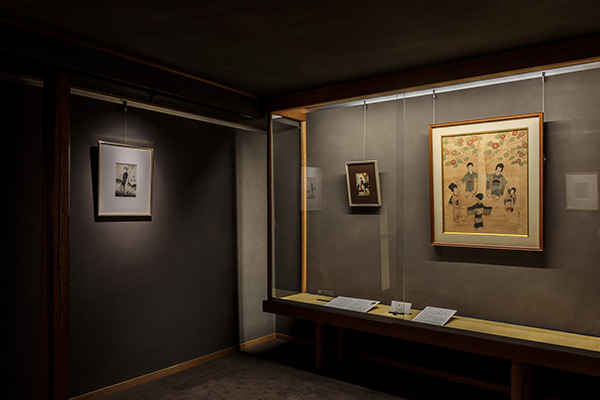
Exhibition room. Artworks of the Yumeji Art Museum’s collection are displayed according to the season.
Shonensanso

“Shonensanso” was Yumeji’s live-in atelier that he designed and built in Tokyo in the last years of his life. It is often referred to as his the only architectural work. This Japanese and Western style building, where many of Yumeji’s artwork were created, was faithfully rebuilt in 1979 under the careful supervision of his second son, Fujihiko. On 2019, 135th anniversary of Yumeji birth, the building was renovated and now exhibition follows the theme of Yumeji’s life, design and music. In total, seven rooms are now open to the public. In addition to Eiji Mitooka’s ‘the black cat Kuronosuke’s room’, there are also a number of special exhibitions and workshops that take place throughout the year.
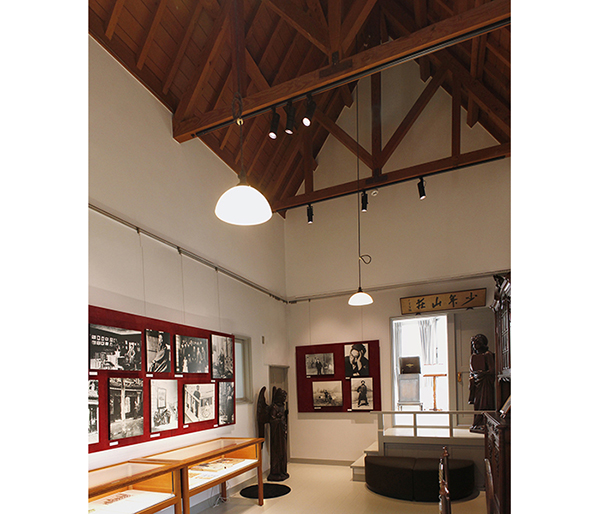
This is Yumeji’s studio. The height of the ceiling indicates that this room was designed as s studio. Desk and chair of the time are used to reproduce a similar atmosphere. Remains and pictures are put on display to further introduce Yumeji’s life.
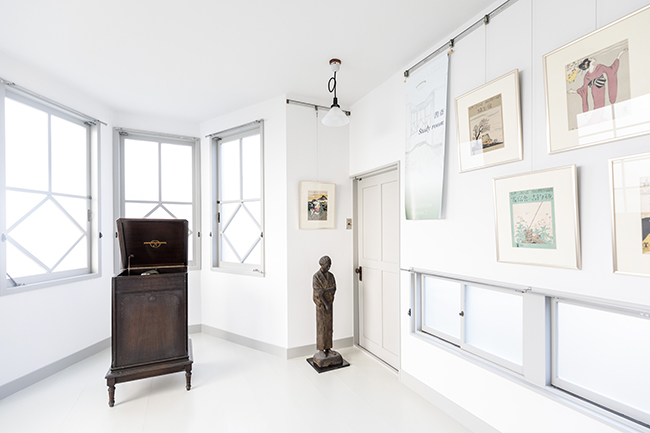
This study room is located next to the studio room. This exhibition room has a theme of music, and displays Senow Music score designed by Yumeji. The music that matches the exhibition is also playing in the room.

The second floor of Shonensanso is open to the public after renewal in March 2019. The room for the guard cat of the Yumeji Art Museum yard “Kuronosuke” was produced by Eiji Mitooka. The other room is a collaborative exhibition space between contemporary artists and Yumeji.
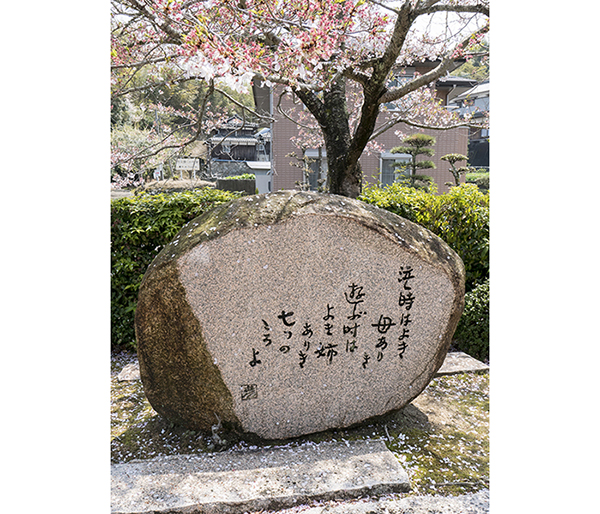
The “Yumeji poem monument” located in the park between Yumeji Birthplace Memorial Museum and the Shonensanso.
When I cry, my mother is beside me.
When I play, my sister is beside me.
When I am 7 years old.
When I cry, my mother is beside me.
When I play, my sister is beside me.
When I am 7 years old.
